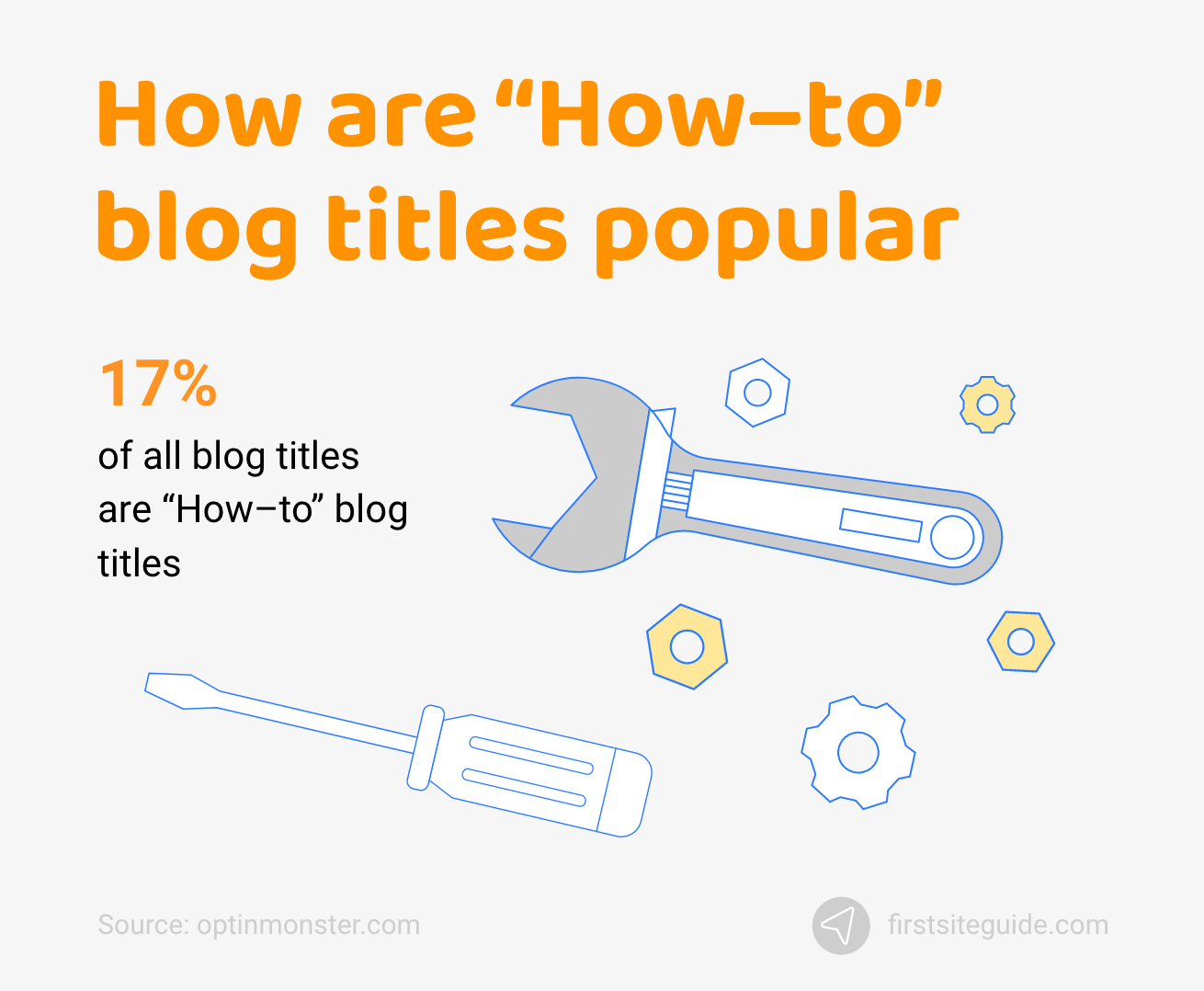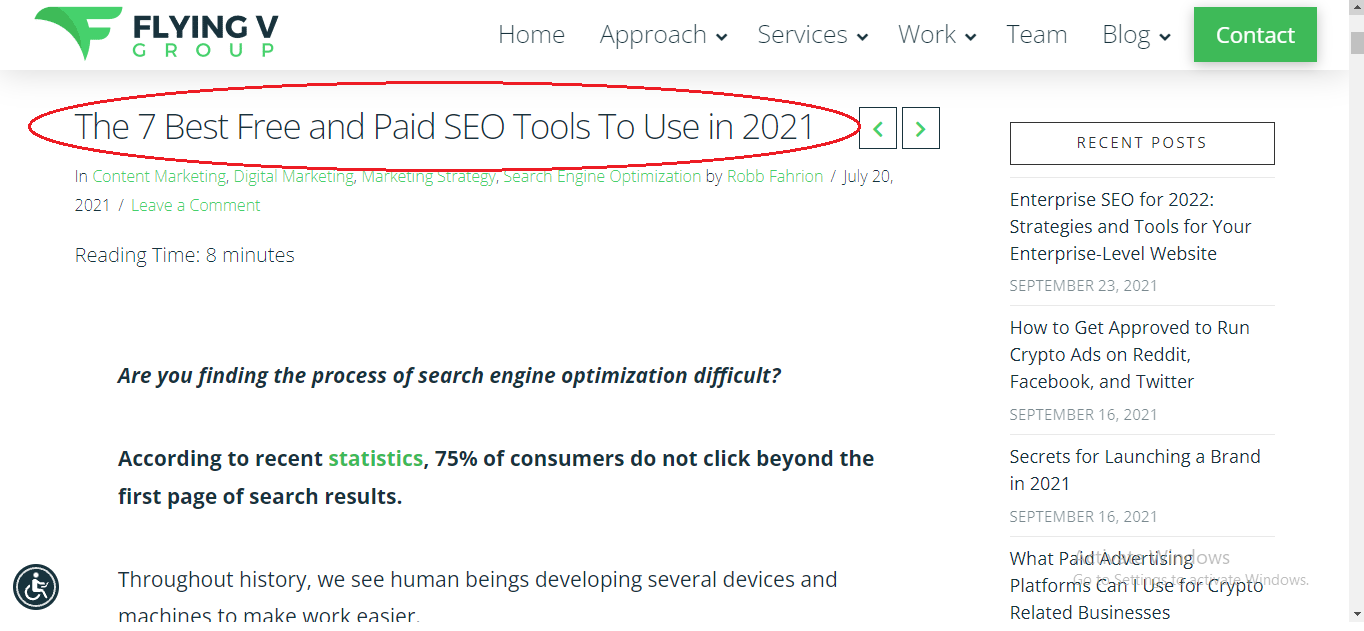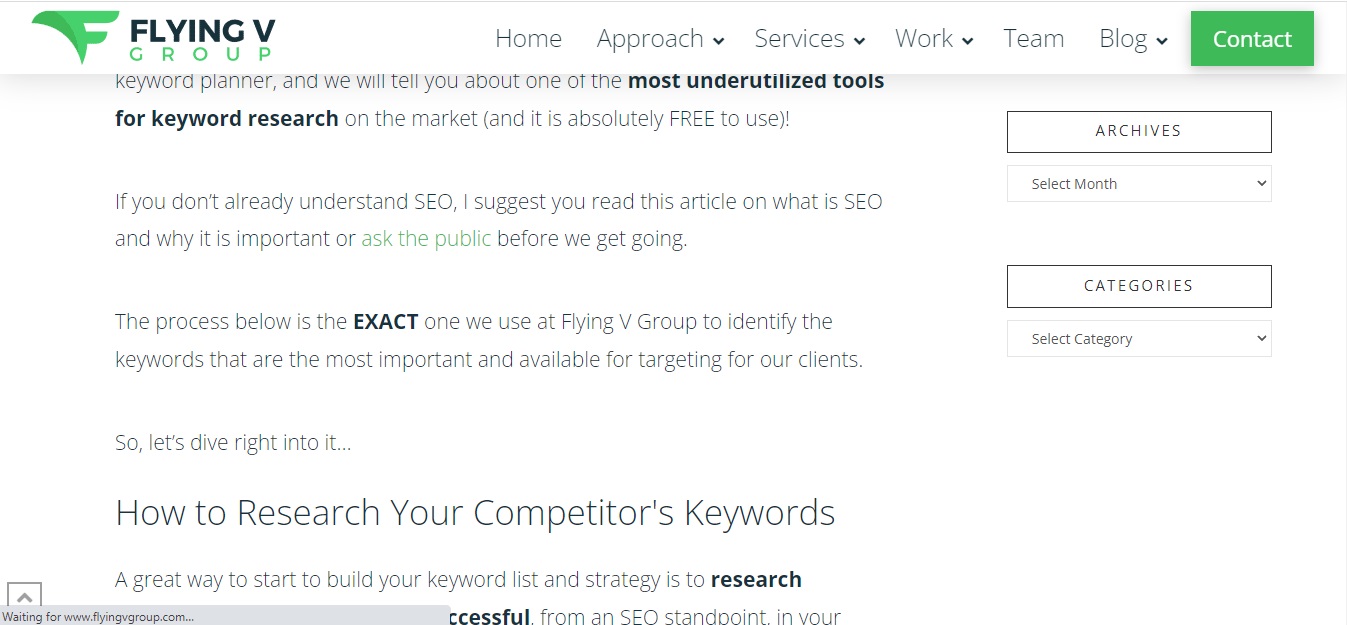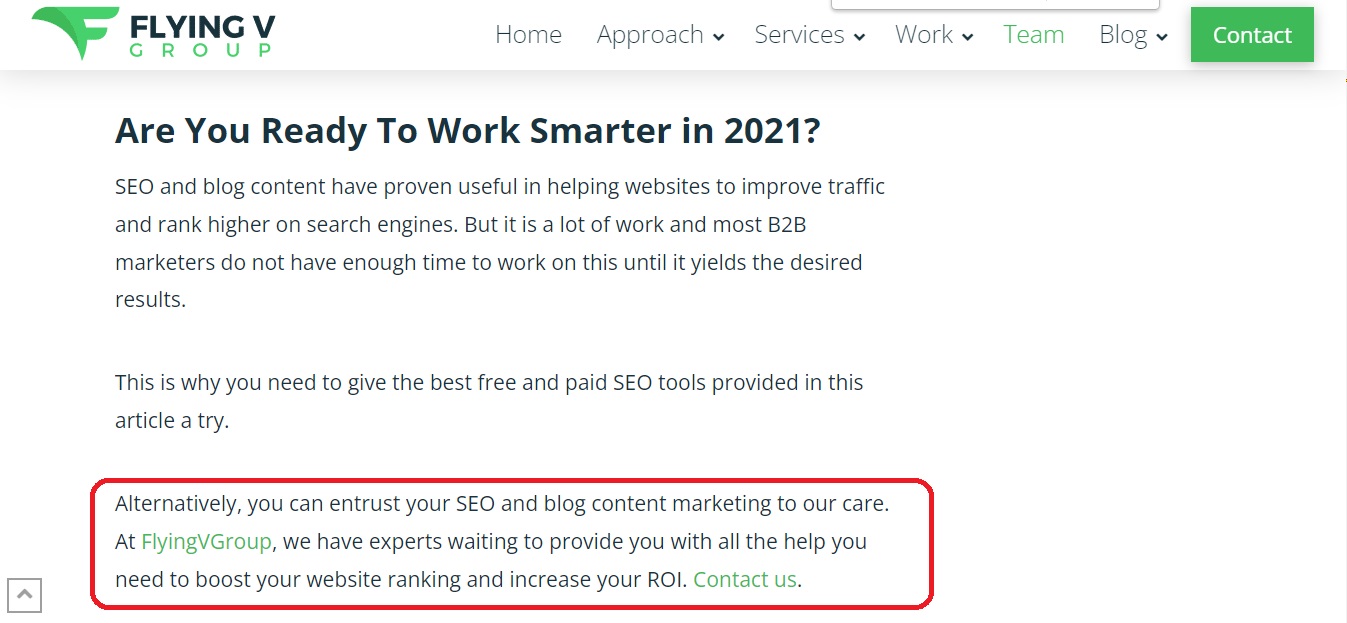
Are you tired of being on the second or third pages of search engine results?
Advanced Web Ranking statistics revealed that the first spot on search engine result pages gets an average of 30.52% click-through rate (CTR), while the second spot gets 12.76%.
The demand for in-depth articles is rising with an increase in competition for short-form content. However, there is no fixed number of words that qualify content as long-form.
According to HubSpot, in 2020, the average blog post crept up to 2,164 words. Hence, HubSpot says long-form content should fall between 1,000 and 7,500 words, while BuzzSumo said it should not be less than 2,000 words.
This ultimate guide will reveal the anatomy of long-form blog posts that rank on Google and get lots of traffic. By the time you are done reading the article, you will see for yourself practical examples of two blog posts and the results of their different content marketing strategies.
But before we proceed, here’s a quick outline of the article.
Writing Long-Form Blog Posts Exposed
What are Long-Form Blog Posts and What They Are Not
Long-form blog posts are super-helpful for any industry. However, as a digital marketer, you cannot help but make some types of content into long-form blog posts.
Examples of such content include:
X
X
X
Here are 12 Long-Form Blog Content Ideas [2022].
7 Thrilling Reasons Why You Need
to Create Long-Form Blog Posts
Click the interactive section below to explore the 7 advantages for creating long-form blog content for your brand and business; it's time to get more/better rankings, traffic and leads - or your competitors will.
Search engines are filled with all manner of articles - all vying for the No. 1 position. However, search engines cater to users’ needs, so you need to write high-quality content that meets the needs of your target audience so that Google can rank you higher.
With longer content, it is easier to cover more areas of your audience’s needs. Also, your content will be more relevant, and you will attract more traffic, meaning you’ll get to rank higher.
Value-rich content wins all the time.
Users are more likely to engage with your content if the information you provide is in line with their needs.
It is easier to cover a broader area on any subject matter and answer at least one question the reader asks with long-form content. Doing this will get readers curious enough for more answers. Sometimes, they will go through other articles on your website.
One of the best ways to convince your readers that they can rely on you for information related to your niche is by offering your readers comprehensive and insightful content. If you can impress your readers with such content, they will consider you an authority in your niche and visit your blog posts regularly for more insight.
With consistent quality content delivery, your online reputation will improve, and people’s trust in your brand will continue growing - and so will your brand authority.
Organic traffic is significant because you do not have to pay for clicks, and one good content can continue bringing in organic traffic more than three years after it is published.
Once you publish content that Google considers high-quality and relevant, you will get better rankings and get more organic traffic.
When your users are happy with the result of your content, they will be more inclined to share it with others on social media.
A study revealed that out of more than 100 million articles analyzed, long-form content ranging from between 3000 and 10000 words was the most shared on social media.
Your business will have more chances to thrive online if you focus on creating rich long-form content that meets the demands of your audience. Soon, you’ll get backlinks from social media platforms and other places that your readers shared your content.
The result?
You’ll get increased traffic and conversions on your website.
Getting links from other domains takes lots of work. But one way you are sure to get links faster is by creating well-researched long-form content that people will like to link to consistently.
From HubSpot research, it is clear that longer content of over 2,500 words attracts more backlinks.
Also, long-form content will include many outbound links to authoritative sites, and these sites will not mind linking back to you or sharing your content.
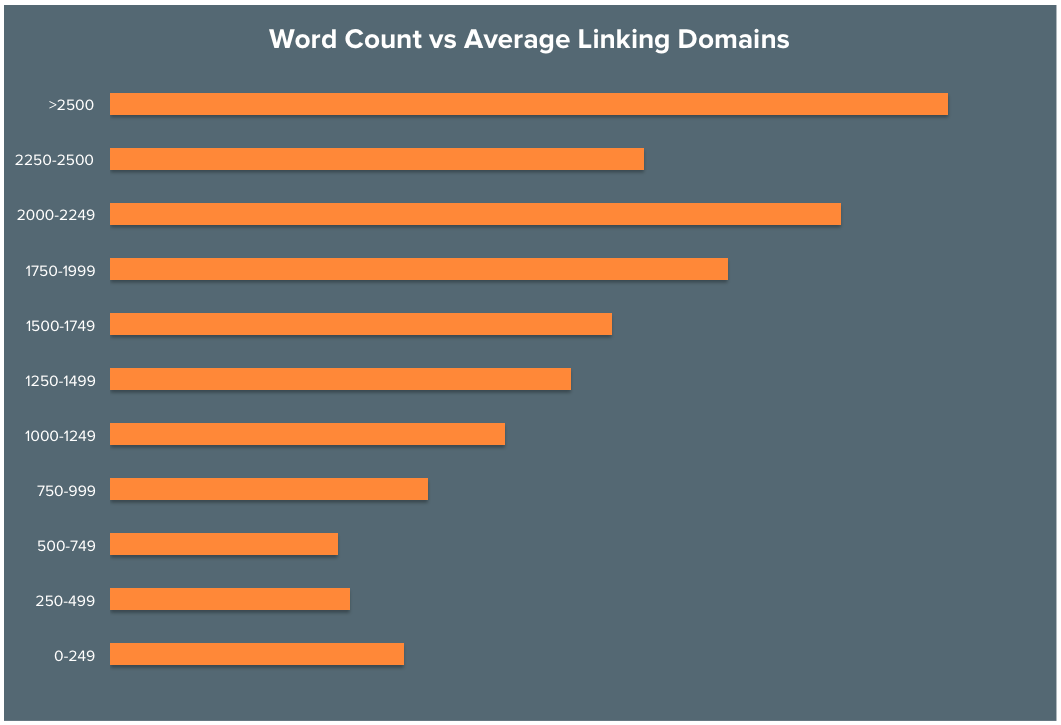
Click the image to view at full size
It pays to write long-form content!
What happens when your long-form articles attract more backlinks, traffic, shares, ranking, engagement, and brand awareness?
You’ll get more conversions.
Your ability to create content that meets the needs of your target audience will make it easier for you to sell your product or service to them. For example, with a good call-to-action or landing page, you won’t have to persuade visitors to take the next step as they will be eager to do business with you.
When Is the Right Time
to Write Long-Form Blog Posts?
Long-form content is great for attracting more traffic, getting more backlinks, winning more clicks, getting more shares, and increasing your SERP rankings. No doubt!
But does this mean that short-form blog posts are irrelevant?
No.
Long-form content may be great, but you need to know when to use it for optimum results.
So, when should you create long-form content?
1. If your competitors are publishing long-form content
Do you spy on your competitors?
If you don’t, you should make it a point of duty to start doing so immediately.
Spying on your competitors gives you an idea of their digital marketing and shows you loopholes you can take advantage of to grow your brand. In addition, it will help to see what you are doing wrong so that you can make improvements.
So, if your top competitors are regularly posting 2000+ word articles, you might want to upgrade your 500-word or 1000-word articles. In addition to your other digital marketing strategies, doing this can help improve your rankings and outrank your competitors.
2. If you are trying to create pillar content
Using long-form blog posts will be a great idea if you have pillar content and cover many subtopics. The reason is that it will allow you to cover a particular field. However, with the quality of information embedded in the content, you will undoubtedly stand out as a reliable source of information in matters relating to your niche.
3. If your topic requires you to go in-depth
As a content writer, you can quickly identify topics that need you to dive deep. It will be wrong to try and squeeze a 2000-word content into a 500-word article.
Whatever your reason may be, don’t try to break one article into four different ones just because you want to publish a certain number of articles in a week.
So, instead of scratching the surface on a topic that will be more relevant to your target audience if it were longer, go all-out and create a long-form blog post that will incorporate every piece of information that readers will find helpful.
Long-Form Blog Post Case Study
[Ahrefs SEO Analysis]
Next I will compare two top blog posts on one of our client’s websites. FlyingVGroup, a digital marketing company, uses blog posts as one of its digital marketing strategies and partners with content marketing experts to produce high-quality blog posts that will boost traffic and conversions on its website.
Before partnering with us to write top-notch blog posts for their website, the company had a content writer on their payroll.
Let’s dissect both articles and compare the results...
We’ll be comparing one of our blog posts to an old blog post written by their former content writer using Ahrefs SEO Tool. After the analysis, we’ll also show you key elements we incorporate in our blog posts that make them perform so well in SERPs.
Old Blog Post (their writer) vs. Recent Blog Post (our writer)
NOTE: both posts were published on our clients website
Old Blog Post (other writer)
Recent Blog Post (our writer)
Enter your text here...
Enter your text here...
Write the answer to the question here. This way, your visitors can easily pick the questions that matter to them, without being distracted by loads of text from the FAQ.
The texts in our landing pages can help you in creating good copy. And don't worry about it too much. The only way to get better at copywriting is to write more copy. So, get writing.
Only if you like awesome pages that are rapidly customizable to your needs.
Does your product have a target audience? Does it have benefits? Then you can and should explain those benefits to your target audience on a page like this.
Conclusion:
Lorem ipsum dolor sit amet, consectetur adipisicing elit, sed do eiusmod tempor incididunt ut labore et dolore magna aliqua. Ut enim ad minim veniam, quis nostrud exercitation ullamco laboris nisi ut aliquip ex ea commodo consequat. Duis aute irure dolor in reprehenderit in voluptate velit esse cillum dolore eu fugiat nulla pariatur.
Top 10 Critical Elements of a Long-Form Blog Post
Writing long-form blog posts aims to provide more value to your target audience. To do this, you must have your goals well-aligned, be patient, and also be disciplined.
Whenever we write for our blogs or clients websites, we ensure to implement these 10 key ingredients.
You can replicate our strategy and see your rankings, traffic and leads increase like never before.
Or, you can hire our content team and leverage our 20+ content writing and digital marketing experience, expertise and experiments. Save time, money and effort down the line.
#1. Titles
When it comes to content writing, having a catchy blog post title is vital. In addition to giving a first impression of the kind of writer you are, it is a major determining factor of whether your target audience will like to read your blog post or not.
No matter how long-form and rich your blog posts are, no one will read them if you do not create eye-catching titles.
In addition, titles are an essential part of any good SEO content marketing strategy. Therefore, a well-crafted title can determine how much traffic your content attracts, as well as your ranking in SERPs. Including your primary keyword in your title will also help to boost your visibility in search engines.
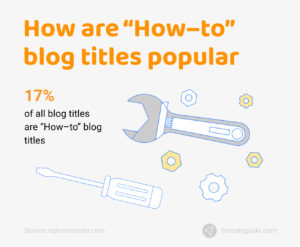
Our strategy:
We craft three titles after writing the content - and not before - then we pick the best one.
Crafting titles after writing the content gives a better idea of what to include in the title.
Here are the top 4 winning title ingredients we consider:
Statistics from Content Marketing Institute revealed that blog post titles with eight words, at least, received a higher click-through rate of 21%.
We work with this piece of information to craft longer titles that cover the subject matter we are writing on in its entirety. For example, our case study article title is made up of 12 words - “The 7 Best Free and Paid SEO Tools to Use in 2021.”

Click the image to view at full size
Shorter title lengths are not a good choice since they limit our target audience’s content knowledge.
Crafting titles that end with either a question mark or exclamation marks will catch your readers’ attention and get them interested in reading your content. Curiosity is a major motivating factor for getting people to do something, and in this case, it will get people to want to know what you have to offer.
Statistics show that adding a colon or hyphen to your title attracts up to 9 percent more clicks. Punctuations like these can also shed more light on the topic and convince your audience that you know what you are saying.
It's always a great idea to convert general titles with specifics like the year of publishing, or number of tips/insights/resources shared inside your blog post.
In general, this helps trigger more clicks and engage more readers to consume your content.
#2. Intros
Do you want your visitors to read your content past the first line? You need to craft an introduction that grabs their attention.

A good introduction serves the following purposes:
- It addresses readers directly
- It describes an emotion
- It identifies readers’ challenges
- It promises to solve readers’ challenges
- It gives readers an insight into how best to solve their problems
Our intros typically comprise these 3 significant elements:
We always introduce our articles with a question. Why?
Posing a question that your readers might be asking can keep them hooked to your content.
Questions are compelling if you know how to use them.
Sometimes, we opt for rhetorical questions that just seek to make a point, but at other times, we pose questions that will prompt our readers to think.
Here’s an example from our case study:
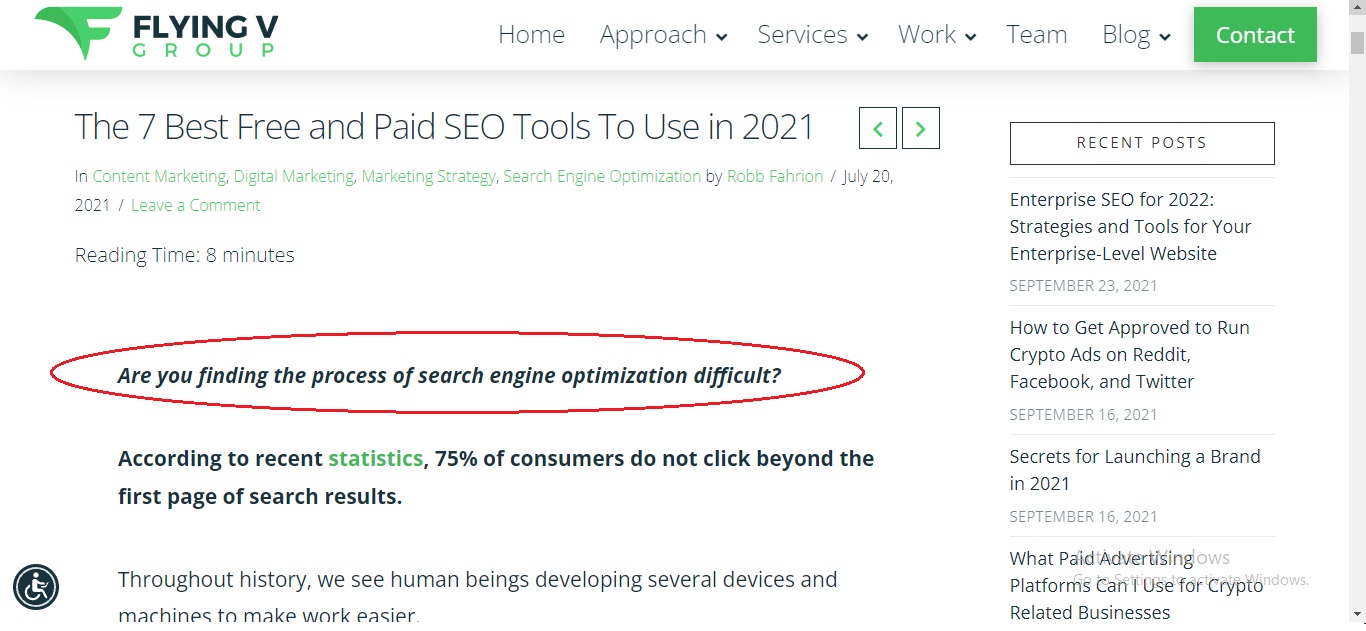
Click the image to view at full size
In our case study example, we went easy on our introductory question to get our readers interested without getting them overwhelmed or lost in thought. Hence, anyone experiencing difficulty with SEO will identify with the question and want to dive into the content.
So, with our kind of question, we highlight a pain point to let readers know that we understand their problem and they have come to the right place for answers.
In addition, we add questions within the content to sustain readers’ attention so they don’t quickly lose interest in the blog post.
Here’s an example:
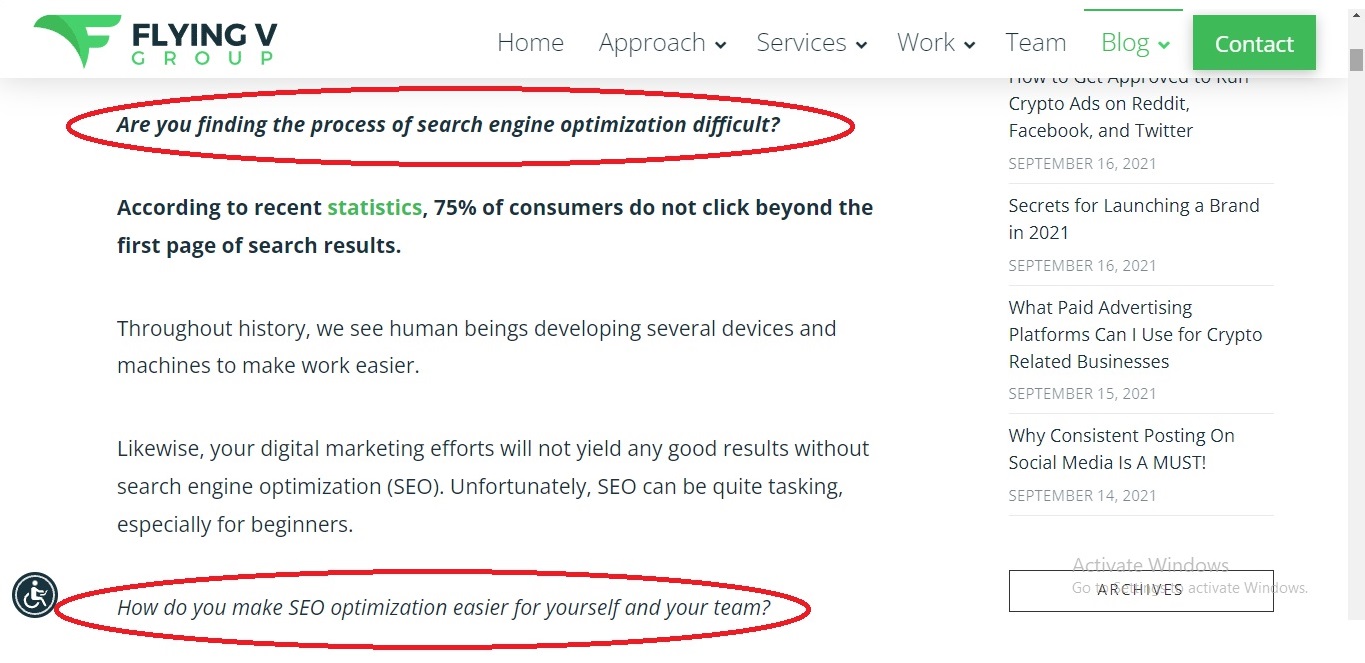
Click the image to view at full size
However, note that it is essential to quickly back a question up with an answer.
Stating an exciting fact or statistical data is a great way to let your readers know you are well versed in issues relating to them directly.
Statistical information that is uncommon and shocking will get your readers hooked. At the same time, unrelated and uninteresting facts or data will be tedious, confusing, and even give readers a wrong impression of y0u.
Here’s an example:
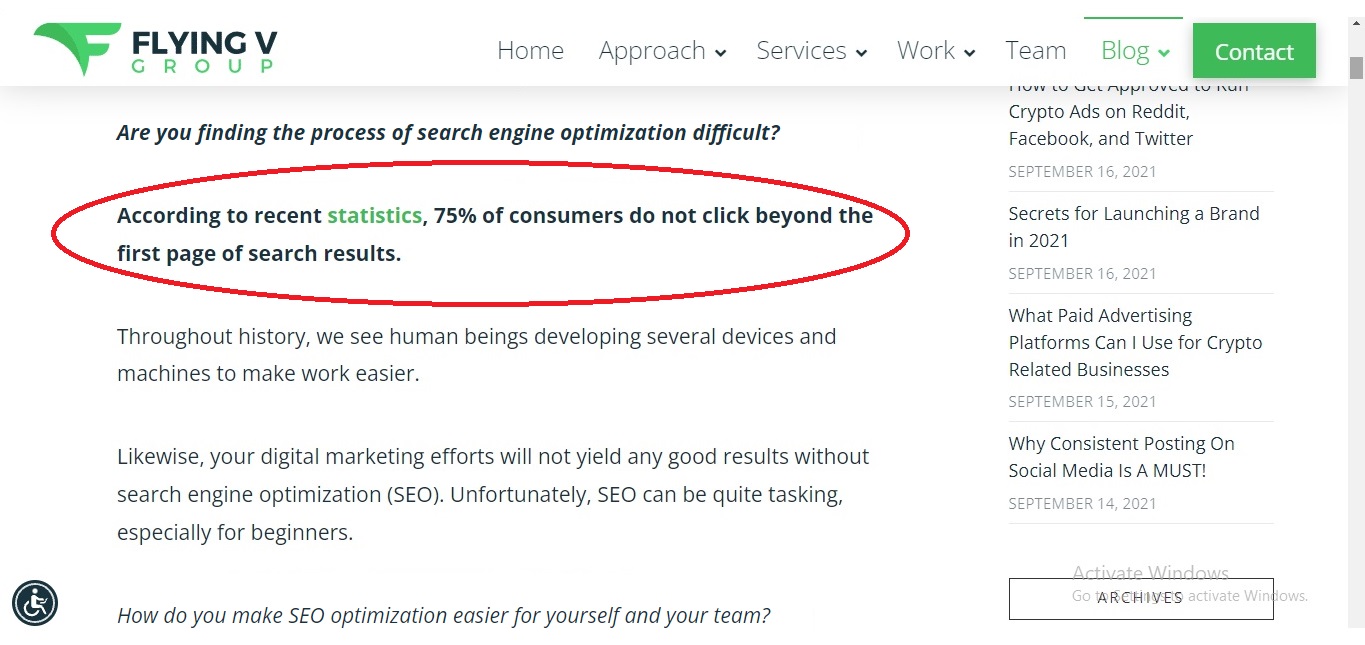
Click the image to view at full size
We like to ensure that our statistics are current and authoritative sources, which we will always link to for verification purposes.
Story-telling is another fundamental technique that we use in our introduction to keep readers interested in the content.
A good story can do wonders for your content. Here's how:
Life is about stories because we are surrounded by stories - ours and those of other people.
We cannot overemphasize the power of introducing your article with a good story. Therefore, our stories are often short and end in a way that links to the content.
Look at this example:
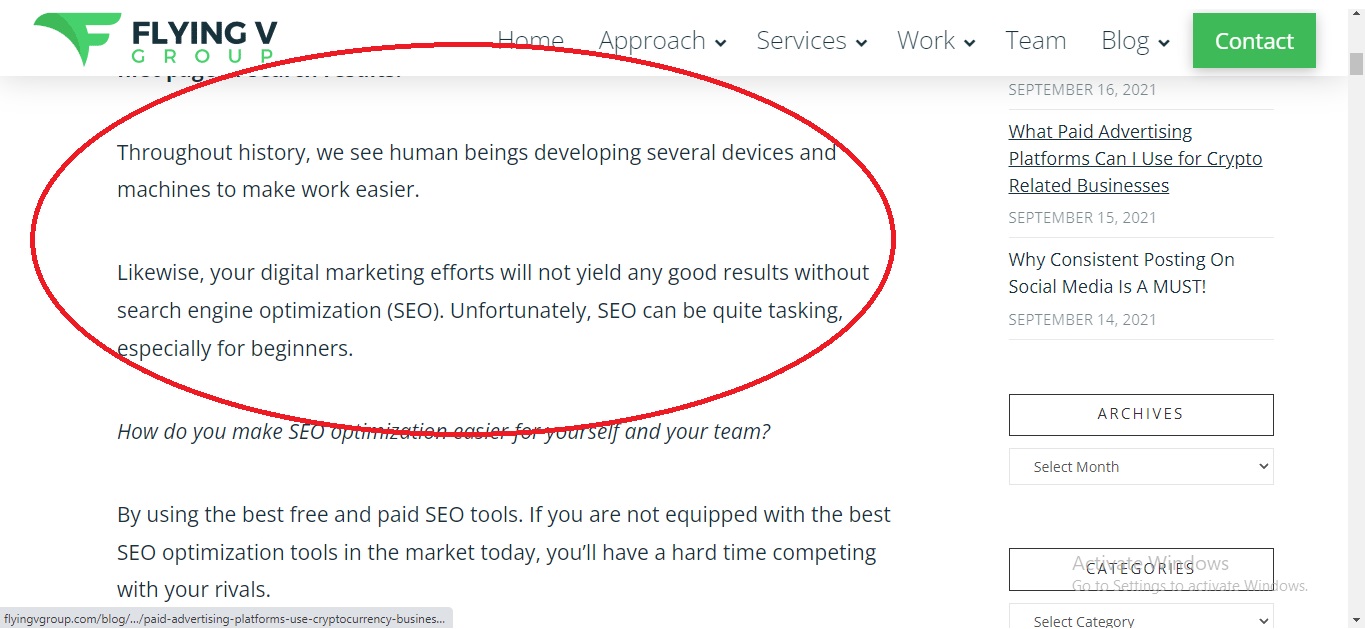
Click the image to view at full size
In this example, we briefly took our readers on a journey of man’s quest for ways to make their work easier. Then, we related it to how SEO makes digital marketing more manageable.
There are a few techniques we use in storytelling:
Depict a person, object, or place in your story
Use words that appeal to your readers’ five senses
Use stories as examples, not the entire content
Make your stories relatable
Your stories should align with the center-point of your blog post
Keep them short, simple, and interesting
Sometimes we go for fiction, but other times, we use natural, credible, and relatable stories. We aim to lure our readers into reading more and following our line of thought. However, we keep our stories short and only use them to convey a particular message to our audience.
#3. PAS formula
The Pain-Agitate-Solve (PAS) formula is one of the most efficient copywriting strategies you can incorporate in your long-form blog post.

How can you effectively use each component of the PAS copywriting formula in your long-form blog post?
Here’s how it works:
According to a Harvard University professor, Gerald Zaltman, 95% of the purchasing process is emotional.
Writing is a primarily emotional process, and it is essential to note that people will only patronize your product or service because they have a pain point.
But what are these pain points?
Pain points are problems that your prospective customers are experiencing.
IMAGE
Let’s identify some of the pain points of digital marketers:
Not sure if marketing efforts are working
Winning over new clients
Need more current data
Too many competitors
Dealing with unresponsive and dissatisfied clients
Keeping up with the latest digital marketing trends
Creating a talent pool
Well, the list can go on and on.
Mentioning one or more of these pain points at the beginning of your blog post will grab users’ attention and get them emotional. They’ll begin to see reasons why they need your products or services.
How can you position yourself as a potential solution?
The aim of identifying customers’ pain points is to get them thinking and looking for a solution.
To achieve this, you need to make the problem hurt by elaborating on their experiences and issues created by the pain point. Then, dig deeper into the problem so that customers will be more eager to find a solution.
Now that your customers are eager for a solution to their problem, what next?
Offer them a solution that works. It could be a product, service, or any tool that will end the problem you just agitated.
Here’s an example from our case study article:
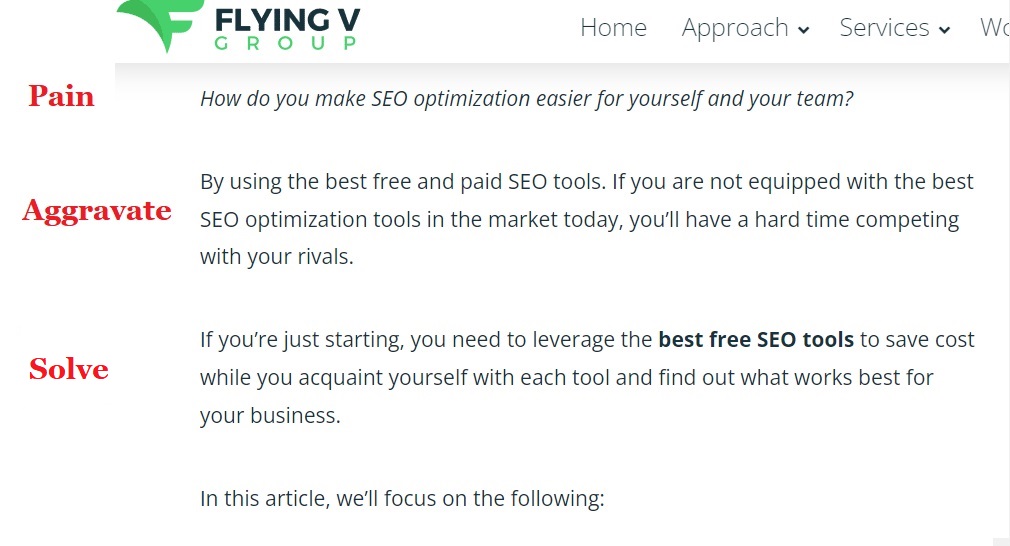
Click the image to view at full size
We leveraged the PAS formula, but not in a very conventional way. Instead, we gave the formula a little twist by offering a solution before diving into the problem immediately after, and then we brought up the answer again.
#4. FOMO copywriting technique
The fear of missing out, called FOMO for short, leverages people’s fear of missing out on an exciting opportunity/tip/resource - if they fail to take immediate action. This technique is very effective because fear drives most of our efforts and motivates us to do things we wouldn’t normally do.

Source: Kevinhalloran.net
Using the FOMO copywriting technique will help to increase engagement on your web page and get a better ROI.
How can you use this technique to guarantee
the optimum performance of your long-form blog posts?
Use FOMO power words in your titles or headlines, such as:
- Eye-opening
- Myths
- Top Secret
- Classified
- Restricted
- Censored
- Confidential
- Hidden
- Unique
- Unheard of
- Withheld, etc.
Leverage exclusivity in your content, e.g., special offers for subscribers, member-only offers, content, tips, resources, etc.
Make your offers and content time-restricted. Always use legit scarcity elements, and avoid hype at all costs.
Offer readers secret or restricted information to increase their curiosity and interest.
#5. Third-party graphics
For a successful content marketing strategy, you need to value graphics as you do text. However, it is better not to use any photos at all than to use the wrong ones. Images are a chance for readers to pause and absorb what they’ve been reading, and they can sometimes add humor to your article.
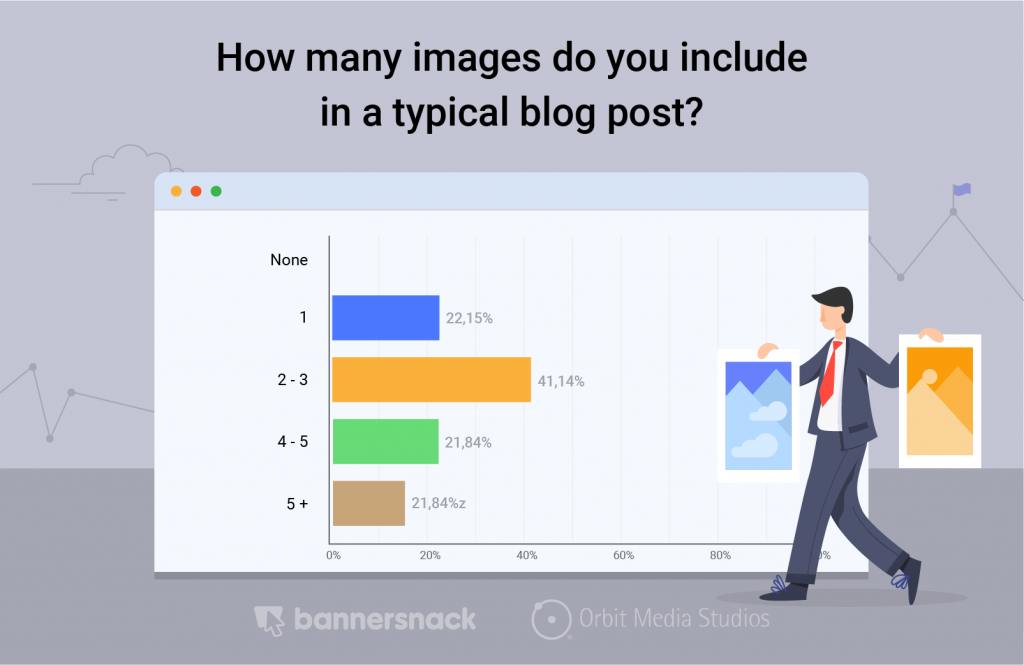
(Source: Creatopy)
A recent survey reveals that every blogger out there leverages the power of visuals in their blog posts when blogging for business. About 22% use just one image per blog post, while about 21% use five or more graphics.
You can create your custom graphics using online design tools, offline tools, or hiring someone else to do it for you.
Here’s why you should include graphics in your blog post:
- Graphics are attention-grabbing;
- They evoke readers’ feelings, retention, and associations;
- They improve the reading experience;
- They save you the time you would have spent over-explaining;
- Custom graphics can get you backlinks and shares;
What kind of graphics should you avoid in your content?
(1) Stock images are easy to get but often commonplace and do not infuse much meaning to your content. You want your readers to pause, look at your pictures, and even share them, not to scroll right past them. So, stock images are simply too generic and will not give you the desired result unless you use them as a background image for a text you want to add.
Another type of graphics to avoid using in your long-form blog posts is the (2) royalty-free image. They are often worse than stock images in terms of image quality. In addition, these images will reduce the rate of your article, won’t get you backlinks, and could even make you lose traffic.
Which graphics are the best?
Instead, use graphics that are unique, attractive, and contextually relevant to your blog post. If you have the time, you can create custom graphics for each of your blog posts. But if you decide to save more time, you can opt for third-party pictures instead.
Pictures that go along with text are more manageable for readers to remember than just plain text. According to research, readers retain 10% of the content they read after three days, but retention increases to 65% if images accompany the text.
Top 6 Images & Graphics We Include in Long-form Blog Posts
(and so should you!)
Blog posts with graphs and charts attract the attention of data lovers. They prove the value of a point you are trying to make, and niche blogs love to link back to them. Data-rich posts with graphs and charts are ever-green, even if they may not appeal to everyone.
We love using third-party graphs and charts in our content to elaborate on some points or data we mentioned. In addition to generating natural backlinks, they also attract more traffic and increase rankings in SERPs.
Screenshots are also vital when describing products or tools. You can easily explain your points by using screenshots, just as we have done in this article. Blog posts that depend on screenshots include reviews, tutorials, Tips & Tricks, How To’s, etc. They help to describe different steps of a process for easier comprehension.
Illustrations add a lot of meaning to a blog post. They make your posts more memorable and easier to digest. Also, they are not quite common, so leveraging them will allow you to stand out from the crowd as a more original writer.
Furthermore, your descriptions should look professional and effectively reflect your brand’s tone and message.
Most bloggers prefer to design their illustrations themselves to enable them to convey their message better. It is a time-consuming process but very rewarding in terms of engagement and backlinks. However, some bloggers copy these images and do not send backlinks. To avoid this from happening, endeavor to add your website address or logo to your illustrations.
Infographics are much loved for their ability to generate many social shares. With infographics, you can compile different information in one single image. As a result, they attract natural backlinks and boost traffic.
Although we do not often include animated graphics in our blog posts, they are also very effective in boosting engagement. They are not easy to generate compared to other images but effectively grab readers’ attention.
Often used in influencer marketing, quotes are valuable for increasing your reach as a content marketer. Creating custom graphics using quotes from influencers in your niche will make your content more powerful, memorable, and easier to share.
#6. Image SEO
As digital marketers, we care about how our articles perform in search engines. Therefore, optimizing our images benefits us and the way search engines index our pages.
For example, Google gets contextual information from optimized pictures and uses it to categorize blog posts better.

Why it's important to choose a suitable image format:
Taking note of image format is necessary as it determines the load time and size of the image, among other factors. Popular formats like JPG/JPEG and PNG are the best for SEO and saving space. GIF is also suitable for animated pictures and is smaller than PNG and JPEG.
UPDATE: webp file format is getting popular amongst bloggers. Neil Patel and Brian Dean are using it. According to Google, webp is a ‘modern image format that provides superior lossless and lossy compression for images on the web.’
How do we use image SEO to boost our rankings?
Add keywords to image file names
Keywords are crucial for SEO and constitute a significant image ranking factor. We include keywords in our image file names, then separate each word with a hyphen so that search engines can easily recognize them. Unfortunately, search engines do not recognize underscores.
Include image descriptions
Image descriptions, which we place below each image, provide an opportunity for us to add keywords to our image captions, which will improve our readers’ experience and boost SEO. Around 150 characters are alright for image descriptions.
Alt tags help to describe images and what they represent. They are created for search engines and are only seen by users when an image refuses to load. Alt tags provide context with which Google indexes your visual content. Also, they give readers an idea of what photo is on the page if it doesn’t load.
#7. Table of contents
If you have been focusing on long-form blog posts, you need a table of contents now more than ever. A table of contents provides a better user experience by allowing them to see the layout of your blog post. In addition, it helps them know whether they’ll find what they are looking for in your content or not.
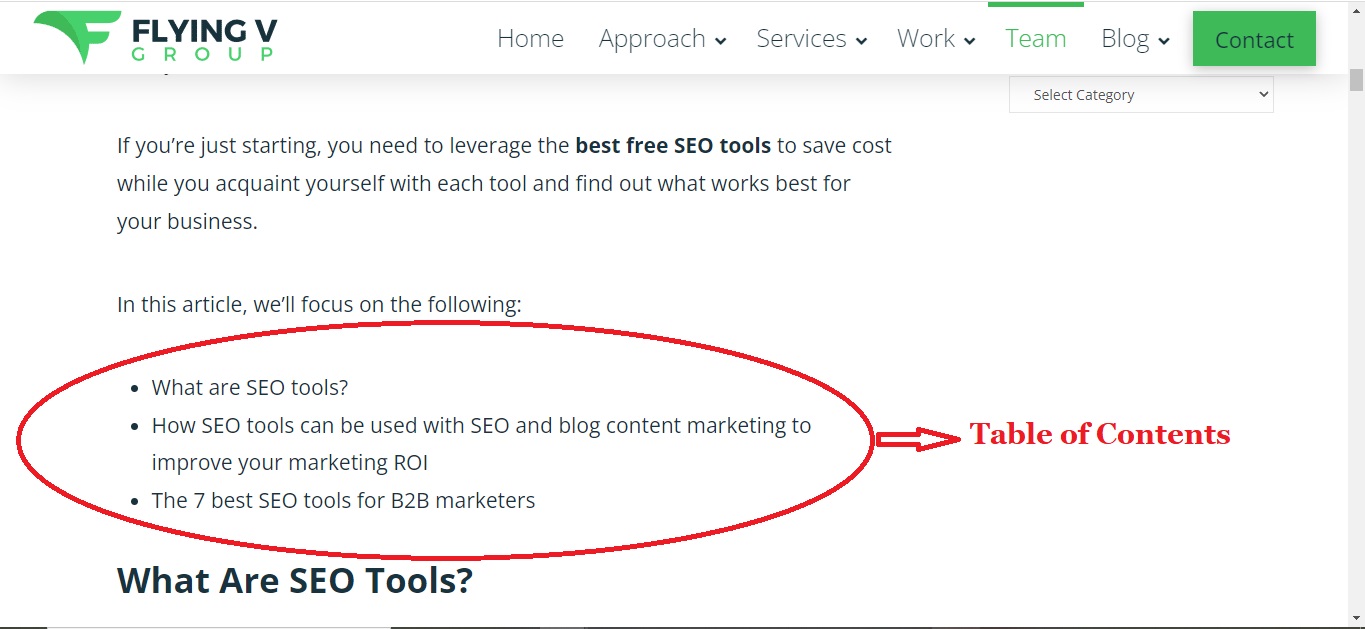
Click the image to view at full size
Table of contents advantages:
It is great for readers to go through your entire article, but some readers just want a simple answer to their queries.
Meanwhile, comparing our article to the older case study article on our client’s site, we can see that they do not incorporate a table of contents in their blog posts (see graphic below)
Notice that they dive right into the content without an outline or table of contents section to guide readers.
Why not make it easy for them to find what they need?
Add bookmark links to your table of contents. Google now uses a table of contents, especially those with bookmark links, as rich snippets.

Click the image to view at full size
What do you gain from using a table of contents?
It gives your blog post a nice layout
Users can find specific information faster.
It improves on-page time.
Tracks the more vital segments of your content
Improves bounce rates
#8. URL slugs
URL slugs are your website’s exact address, and they are visible in SERPs. The URL slug is not the complete web address but just the part after the last backlash.

Click the image to view at full size
Let’s see an example for clarity (see graphic on the left)
When typed in an address bar, the URL slug leads a person to your webpage. Although it is pretty easy to optimize your URL slugs, some digital marketers take it for granted and use gibberish instead.
Search engines include URL slugs while crawling and indexing a website to identify a webpage’s attributes. It is also a significant ranking factor. So, you should write your URL slugs for people and search engines.
It is also a good idea to include your primary keywords or keyphrases in your URL slugs to improve your ranking. Be sure to differentiate similar URL slugs to avoid confusing search engines.
Avoid poorly-written URL slugs because they resemble spam and can discourage users.
#9. SEO meta descriptions
A meta description is found within your meta tags. Its primary purpose is to describe your web page. It gives search engines a brief description of what your web page is all about. Our meta descriptions typically do not exceed 150 characters.

Click the image to view at full size
How compelling is your meta description?
If you don’t think your meta descriptions are good enough, try these best practices:
#10. Formatting
A well-formatted blog post could keep readers interested in reading your content from the beginning to the end. People love to scan through blog posts, especially if they are long-form in nature. However, incorporating the best practices for formatting your blog posts will compel people to stay on your content and even convert when they get to your CTA.

We pay a lot of attention to our formatting because we love to put readers first. So let’s share some of our best practices with you.
8 Blog Post Formatting Tips Most Agencies Are Not Using
Shorten your paragraphs
Shorter paragraphs will make your article look less cramped and increase the whitespace around and between the content. Typically, we use a maximum of three short sentences per paragraph.
Use bullet points to break up text
Bullet points help to convert long (sometimes boring), information-rich paragraphs to bite-sized content so they can stand out and be noticed. Your readers can see vital information on your post with bullet points, and your writing will look less choked up.
Use clear and concise headings
Headings are great for your readers and search engines. Your long-form blog post will have a hierarchical structure, and readers will understand your content better when you use them correctly. Also, they help to break up your content using H-tags such as H1, H2, H3, H4, and H5.
For SEO purposes, you can add your keywords or keyphrases in your headings.
Use the right tone and writing style for the right audience
Find out if your audience will prefer a conversational tone, humor, or something more formal. Knowing the right one to use will keep your audience interested in your blog post.
Your blog post needs some forms of design to improve readability. The typography or font you choose will determine whether your write-up will be easy for people to read or not. So, take your font size and style into consideration and give readers lots of white spaces and a good experience on your page.
Colors are equally important as a good contrast will help blend your text into your website’s background and make it easier for visually impaired or colorblind audiences to read your content.
Both, inner and outbound links count!
Hyperlinks are excellent for your content but don’t overdo it. Include a couple of hyperlinks to authoritative sites but space them out as much as you can so as not to overwhelm your readers.
Also, inner page linking (done right) is essential to your blog’s growth and overall SEO results and rankings. This is where you link to other relevant and targeted pages, posts, and sections on your website, using related keywords and key phrases.
How can readers get in touch with you?
A CTA or call to action is necessary to direct your readers to take the next step intended to convert them.
Example:

Click the image to view at full size
We try to make your CTAs as inviting as possible to increase conversions.
You can also share a clear and concise link with a precise header to get your readers’ attention.
Edit and proofread your articles.
For maximum performance and productivity, perform this task the next day, after you're done with the actual writing.
Humans are the best editors. But after proofreading, we use Grammarly to double-check and edit our articles so we can catch mistakes (grammatical and spelling errors) we might have missed while proofreading.
what our customers are saying
"

Lorem ipsum dolor sit amet, consectetur adipiscing elit. Aliquam ac erat magna. Nulla et dui a ligula accumsan sodales sed nec mi. Cras condimentum metus eget fringilla aliquet.
Anna Olson
/ Marketing Specialist
"

Lorem ipsum dolor sit amet, consectetur adipiscing elit. Aliquam ac erat magna. Nulla et dui a ligula accumsan sodales sed nec mi. Cras condimentum metus eget fringilla aliquet.
Emma Stewart
/ IT Expert
"

Lorem ipsum dolor sit amet, consectetur adipiscing elit. Aliquam ac erat magna. Nulla et dui a ligula accumsan sodales sed nec mi. Cras condimentum metus eget fringilla aliquet.
Julie Moore
/ Designer Maestro
Outsource Long-Form Content. Let's Talk!
Long-form blog posts are a lot of work, but the end product is always rewarding - but only if you do it right.
We’ve provided helpful tips and examples to help make your long-form content distinctive and successful.
Keep in mind these key elements that make up our content marketing strategy for long-form blog posts:
We’re looking forward to creating top-notch content for your brand and helping your business grow like never before.
Let's explore together how we can help transform your blog into your #1 revenue machine.
Codrut Turcanu
~ CEO. Content Marketing Agency Owner.

About the Presenter
Job Title
Lorem ipsum dolor sit amet, consectetur adipisicing elit, sed do eiusmod tempor incididunt ut labore et dolore magna aliqua. Ut enim ad minim veniam, quis nostrud exercitation ullamco laboris nisi ut aliquip ex ea commodo consequat.Duis aute irure dolor in reprehenderit in voluptate velit esse cillum dolore eu fugiat nulla pariatur.
